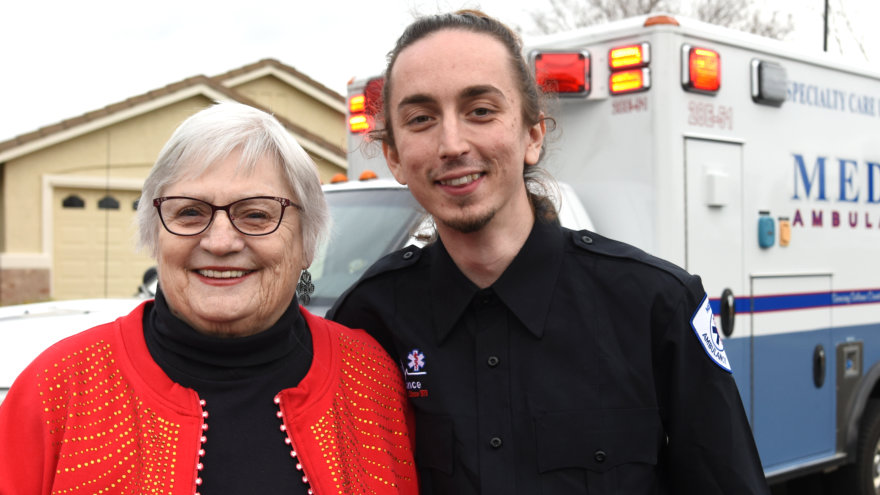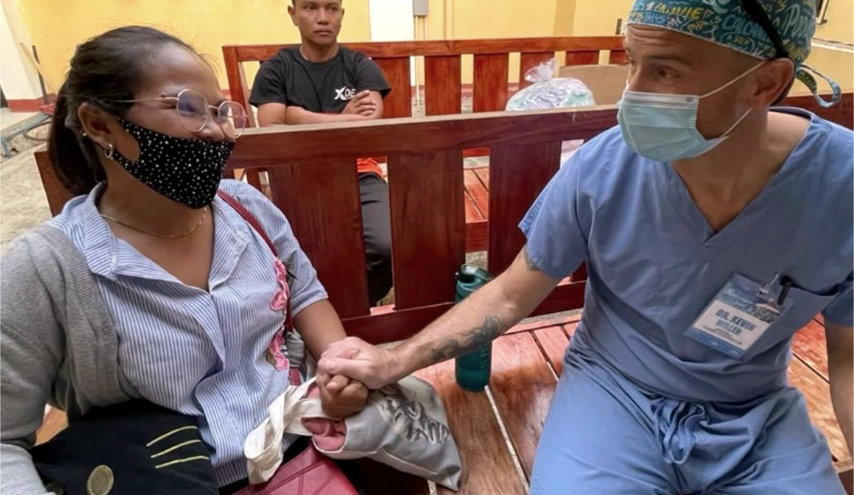Breathing Easy Again

Shirley Webb was out of breath just trying to put on her loafers. At first she thought she’d gained too much weight during COVID. But her daughter, Maria Silva, insisted she check in with her Primary Care doctor Ali Hassani, M.D.
Shirley, a Vacaville resident, was quickly directed to the Emergency Room at NorthBay Health VacaValley Hospital. After a battery of tests, she was ready for what she describes as a thrilling ride — a trip via ambulance — to NorthBay Health Medical Center.
“I didn’t really think there was anything wrong with me, but I enjoyed that ambulance ride,” she recalled. “The lights, the sirens... it was very exciting.”
It was only later that she learned her lungs were filled with blood clots, and if she’d waited another day, she would have died.
NorthBay’s Pulmonary Embolism Response Team, aka PERT, was ready for her when she arrived on Aug. 10, 2022. The team, including interventional cardiologists Mark Villalon, M.D., and Saba Lahsaei, M.D., pulmonologist Karan Julka, M.D., and a team of clinical experts had already reviewed her images and discussed their strategy.
Sometimes a clot-busting medication is enough. Sometime blood thinners are used. In Shirley’s case, the decision was to perform a mechanical thrombectomy, in which the physicians insert a catheter into the femoral vein to remove the blood clots in major arteries of the lungs. Shirley compared it to a vacuum cleaner. “They Hoovered my lungs,” she quipped.
She only stayed one day in the hospital, and now sees James Long, M.D., a hematologist and oncologist with the NorthBay Health Cancer Center, for follow-up care.
According to Dr. Villalon, five out of every 100 Emergency Room visits is a case involving blood clots. Without quick action, a patient can die from cardiovascular collapse, or end up in the Intensive Care Unit for a very long time.
PERT was designed to pull the team together quickly and determine the best treatment, sometimes before the patient even arrives at the hospital.
Blood clots typically form in the legs and travel to the lungs. If one or more clots block blood flow to the lungs, it can be life-threatening, like in Shirley’s case.
How the clots came to be there isn’t clear. She did have a fairly symptom-free bout with COVID a few months earlier, and she did take several airplane trips that summer, but neither is a conclusive cause, say the doctors.
“That’s why it’s important to seek help if you experience shortness of breath or chest pain,” said Dr. Lahsaei. “A person can be perfectly healthy and still have blood clots.”
Other symptoms can include chest pain, leg pain or swelling, usually in the back of the lower leg; fever, excessive sweating, dizziness and a tendency to faint.
The new PERT team will save dozens of lives in Solano County each year, predict Drs. Villalon and Lahsaei. NorthBay Health Medical Center is the only hospital in the county to offer the program.
As for Shirley, she is thankful the PERT team was ready when she needed it.
“Everyone in the hospital was so nice and friendly,” she recalled “It was a very positive experience.”
Pulmonary Embolism Risk Factors:
- Inactivity: Long periods of inactivity, due to bed rest.
- Cramped position: Sitting in a tight position during a long trip.
- Smoking: Tobacco use increases the risk of blood clots in some people.
- Cancer: Oncology patients have an increased risk.
- Being overweight: Excess weight increases the risk of blood clots.
- Supplemental estrogen: The estrogen in birth control pills and in hormone replacement therapy can increase clotting factors in the blood, especially in those who smoke or are overweight.
- Pregnancy: The weight of a baby pressing on veins in the pelvis can slow blood return from the legs. Clots are more likely to form when blood slows or pools.
- Recent surgery: Especially hip, leg or ankle surgery.
Source – Mayo Clinic
This article is reprinted from the April issue of Wellspring Magazine. Be sure to discuss your personal risk factors with your primary care doctor.



